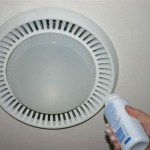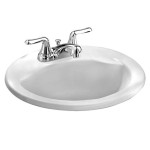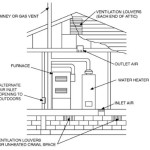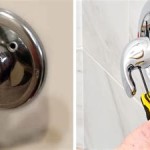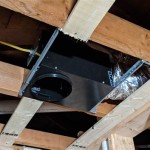What Causes Drain Smell in the Bathroom?
A persistent drain smell in the bathroom is a common household problem, frequently signaling an underlying issue within the plumbing system. While seemingly innocuous at first, these odors can range from mildly unpleasant to genuinely offensive, impacting the overall comfort and hygiene of the living space. Pinpointing the source of the smell is crucial for effective remediation. This article explores the various potential causes of drain odors in bathrooms, offering a comprehensive overview of the factors that contribute to this unwelcome occurrence.
Several factors contribute to the development of drain smells. These often involve bacterial growth, trapped debris, or malfunctions in the plumbing system designed to prevent sewer gases from escaping into the living environment. Understanding these mechanisms is essential for correctly diagnosing and resolving the problem.
Dry or Empty P-Traps
The P-trap is a U-shaped section of pipe located beneath sinks, showers, and tubs. Its primary function is to hold a small amount of water, creating a seal that prevents sewer gases from rising up through the drain and into the bathroom. When this water seal evaporates, or is siphoned out, sewer gases can freely enter the room. This is one of the most frequent causes of drain smell.
Several situations can lead to a dry or empty P-trap. Infrequent use of a fixture is a common culprit. If a sink or shower is not used regularly, the water in the P-trap will naturally evaporate over time. This is particularly common in guest bathrooms that see limited use. Another cause is siphoning, which occurs when the pressure in the drain line is suddenly reduced, pulling the water out of the P-trap. This can happen when another plumbing fixture, such as a toilet, is flushed, creating a vacuum effect that draws water from nearby drains. Improper venting can also contribute to siphoning, as inadequate venting can equalize pressure within the drain system.
Identifying a dry P-trap is relatively straightforward. If the drain smell is noticeably stronger after a period of non-use, or after flushing a nearby toilet, a dry P-trap is a likely suspect. Remediation is simple: running water down the affected drain for a minute or two should refill the P-trap and re-establish the water seal, eliminating the odor. However, if the problem persists or recurs frequently, investigating potential siphoning issues, such as venting problems, is advisable.
Biofilm Buildup
Biofilm is a slimy layer composed of bacteria, fungi, and other microorganisms that can colonize the interior surfaces of drainpipes. This buildup thrives in the dark, moist environment of drains and feeds on organic matter such as hair, soap scum, and food particles that wash down the drain. As the biofilm metabolizes these substances, it releases foul-smelling gases, including hydrogen sulfide, which is responsible for the characteristic "rotten egg" odor often associated with drain smells.
The accumulation of biofilm is particularly common in drains that are used frequently and are not regularly cleaned. Over time, this layer can become quite thick, providing a substantial breeding ground for odor-producing bacteria. Furthermore, the biofilm can constrict the drainpipe, leading to slow drainage and further exacerbating the problem.
Addressing biofilm requires thorough cleaning of the drainpipe. Pouring boiling water down the drain can help to loosen and dislodge some of the biofilm. Chemical drain cleaners, specifically those designed to target organic matter, can also be effective in breaking down the biofilm. However, caution should be exercised when using chemical drain cleaners, as they can be corrosive and potentially damage pipes, especially older pipes. A safer alternative involves using a mixture of baking soda and vinegar, followed by boiling water. This combination creates a fizzing action that helps to scrub the drainpipe clean. Physical methods, such as using a drain snake or a specialized drain cleaning brush, can also be employed to remove the biofilm manually.
Preventing biofilm buildup is key to minimizing drain smells. Regular flushing of drains with hot water, and periodic cleaning with baking soda and vinegar, can help to inhibit the growth of biofilm. Using drain strainers to catch hair and other debris can also reduce the amount of organic matter available for the biofilm to feed on. It is also important to avoid pouring grease or oil down the drain, as these substances can solidify and contribute to the buildup of biofilm.
Sewer Line Issues and Venting Problems
The sewer line is the primary drainpipe that carries wastewater away from the house to the municipal sewer system or a septic tank. If there is a problem with the sewer line, such as a crack, blockage, or collapse, sewer gases can escape and potentially enter the house through drains. This can result in a pervasive and unpleasant drain smell that is difficult to eliminate.
Venting systems are designed to regulate air pressure within the drainpipes and to allow sewer gases to escape through roof vents, rather than entering the house. These vents maintain atmospheric pressure and prevent vacuums from forming that could siphon water from P-traps. If a vent is blocked by debris, such as leaves, bird nests, or snow, it can impede the flow of air and cause sewer gases to back up into the house. Similarly, if the venting system is improperly installed or damaged, it may not function effectively, leading to drain smells.
Identifying sewer line issues or venting problems can be more challenging than diagnosing dry P-traps or biofilm buildup. Signs of a sewer line problem may include slow drainage in multiple fixtures, gurgling sounds coming from drains, or sewage backup in toilets or showers. Investigating the venting system often requires accessing the roof to visually inspect the vents for obstructions. If a visual inspection does not reveal the problem, a professional plumber may need to use specialized equipment, such as a camera, to inspect the sewer line for cracks, blockages, or other damage.
Addressing sewer line issues and venting problems typically requires professional assistance. Repairing a cracked or collapsed sewer line can be a complex and expensive undertaking, often involving excavation and replacement of damaged sections. Clearing a blocked vent may be as simple as removing the obstruction, but in some cases, the vent may need to be repaired or replaced. Ensuring proper venting is critical for maintaining a healthy and odor-free plumbing system.
When suspecting sewer-related issues, it's crucial to avoid using chemical drain cleaners excessively, which can further damage already compromised pipes. A professional plumber can accurately diagnose the root cause of the problem using specialized tools and techniques, preventing unnecessary complications and ensuring a long-term solution.
Beyond the specific causes detailed above, other less common factors can also contribute to drain smells. For instance, plumbing fixture installation errors, such as an improperly sealed drain flange or a loose connection, can allow sewer gases to escape. In rare cases, the drain smell may originate from a nearby septic tank if it is not functioning properly or if it is located too close to the house. Additionally, the type of pipes used in the plumbing system can influence the likelihood of drain smells. Older cast iron pipes are more prone to corrosion and can develop cracks or leaks that allow sewer gases to escape. PVC pipes are generally more resistant to corrosion, but they can still develop problems over time, such as cracks or loose connections.
Proper bathroom hygiene practices are crucial in preventing drain smells. Regularly cleaning the sink, shower, and tub can help to remove hair, soap scum, and other debris that can contribute to biofilm buildup. Using drain strainers to catch hair and other solid waste can also significantly reduce the amount of material that enters the drainpipes. Avoiding pouring grease or oil down the drain, as these substances can solidify and clog the pipes, is another important preventative measure. Furthermore, ensuring that the bathroom is well-ventilated can help to prevent the buildup of moisture, which can promote the growth of mold and mildew and contribute to unpleasant odors.
In addition to the measures outlined above, consider the age and condition of your plumbing system. Older homes with outdated plumbing may be more susceptible to drain smells due to corrosion, cracks, or other damage. If you are experiencing persistent drain smells despite taking preventative measures, it may be necessary to consider upgrading your plumbing system. This can involve replacing old pipes, installing new vents, or even relocating the sewer line. While these upgrades can be costly, they can provide a long-term solution to drain smell problems and improve the overall health and functionality of your plumbing system.
Finally, addressing drain smells proactively is often more effective than waiting for the problem to become severe. Regular maintenance, such as flushing drains with hot water and cleaning them with baking soda and vinegar, can help to prevent biofilm buildup and keep your plumbing system functioning smoothly. If you notice any signs of a potential problem, such as slow drainage, gurgling sounds, or a faint odor, it is best to address it promptly before it escalates into a more serious issue. Consulting with a qualified plumber can help to identify and resolve any underlying problems and ensure that your plumbing system is functioning properly and safely.

7 Causes Of A Sewer Smell In The Bathroom Hays

What Causes Bathroom Drains To Smell

Sewer Smell In Bathroom Solved Bob Vila

Why Does My Shower Drain Smell Bad Kay Plumbing Heating And Cooling

Why Does My Toilet Smell Like Sewage 5 Causes Solutions

What Causes A Sewer Smell In The Bathroom Make It Right

How To Clean A Stinky Sink Drain Home Repair Tutor

Bathroom Smells Like Sewage Causes Fixes Inside Out

Five Reasons Your Bathroom Smells Like A Sewer The Plumbette
My Bathroom Smells Bad But Only When Its Hot Outside It Also Will Slightly Go Away I Run The Sink And Toilet Bathtub Any Thoughts On What Is
Related Posts
